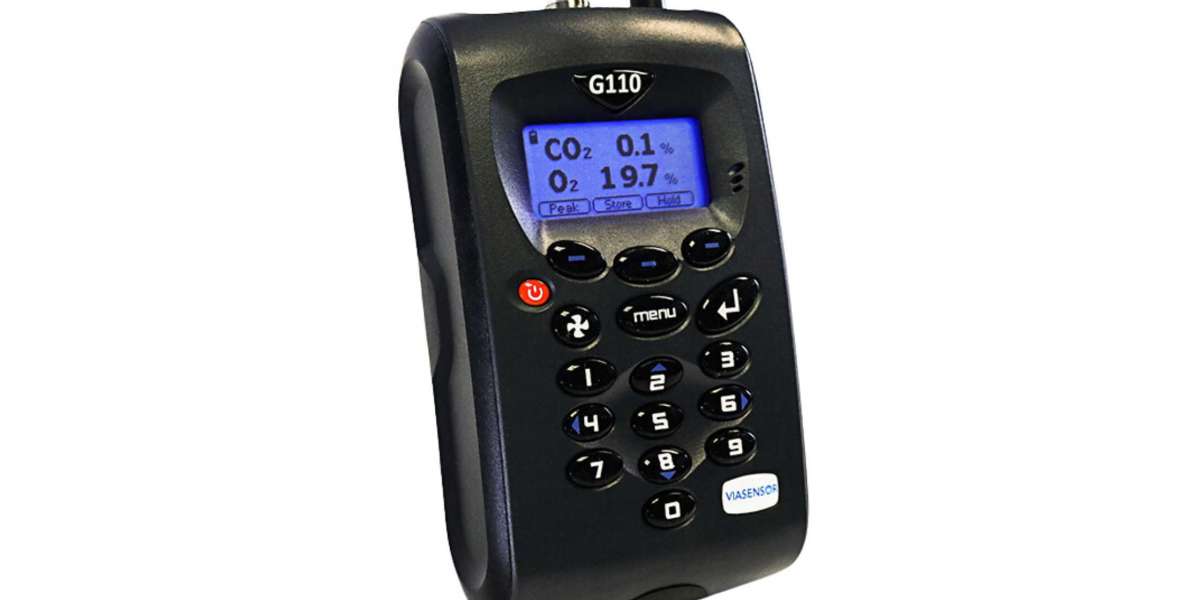From industrial facilities to laboratories, these analyzers play a critical role in detecting hazardous gases and ensuring compliance with safety regulations. However, with numerous options available on the market, selecting the right multi-gas analyzer for your specific needs can be challenging. This guide will help you navigate the decision-making process, ensuring you choose an analyzer that meets your requirements.
1. Identify Your Specific Requirements
Assess the Environment
- Industrial Settings: In factories or manufacturing plants, you may encounter various gases, including volatile organic compounds (VOCs), carbon dioxide (CO2), and hydrogen sulfide (H2S). Identifying the gases present in your environment is crucial for selecting an appropriate analyzer.
- Laboratories: In laboratory settings, the focus may be on detecting specific gases for research or quality control. Understanding the specific gases you need to monitor will guide your selection.
Determine Application Needs
- Safety Monitoring: If the primary goal is to ensure worker safety, consider analyzers equipped with reliable alarm systems and real-time monitoring capabilities.
- Environmental Compliance: For organizations that need to adhere to environmental regulations, look for analyzers that can log data and generate reports for compliance purposes.
2. Understand the Types of Multi-Gas Analyzers
Fixed vs. Portable Models
- Fixed Multi-Gas Analyzers: These are permanently installed in a specific location and are ideal for continuous monitoring in industrial facilities. They often provide more extensive data logging capabilities.
- Portable Multi-Gas Analyzers: These handheld devices are perfect for fieldwork and inspections. They allow for flexibility and are useful in various environments, including confined spaces.
Sensor Types
- Electrochemical Sensors: These sensors are highly sensitive and ideal for detecting low concentrations of gases. They are commonly used for toxic gases.
- Infrared Sensors: Best suited for measuring gases like CO2 and hydrocarbons, infrared sensors are effective for monitoring gas levels in a wide range of applications.
- Catalytic Sensors: These sensors are primarily used for detecting combustible gases, making them suitable for environments where flammable gases are present.
3. Evaluate Key Features
Measurement Range and Sensitivity
- Measurement Range: Ensure the analyzer has a measurement range suitable for the gases you expect to encounter. Some applications may require detecting low levels of gases, while others may need to monitor higher concentrations.
- Sensitivity: Consider the analyzer's sensitivity, especially in environments with low gas concentrations. Higher sensitivity can lead to earlier detection of potential hazards.
Data Logging and Reporting
- Data Storage: A good multi-gas analyzer should have adequate data storage capabilities to keep track of historical readings. This feature is essential for trend analysis and regulatory compliance.
- Reporting Functions: Look for analyzers that can generate reports based on collected data. This feature simplifies compliance audits and helps in reviewing safety practices.
User Interface and Usability
- Display Quality: A clear and intuitive display is vital for easy reading of gas levels and alarm notifications. Touchscreen interfaces can enhance user experience.
- Ease of Use: Consider the learning curve associated with operating the analyzer. A user-friendly interface minimizes training time and increases operational efficiency.
4. Consider the Safety Features
Alarm Systems
- Audible and Visual Alarms: Ensure the analyzer has both audible and visual alarms to alert personnel in case of dangerous gas levels. Adjustable alarm settings allow customization based on specific site requirements.
- Real-Time Monitoring: Look for devices that provide continuous real-time monitoring, ensuring immediate detection of gas leaks or dangerous concentrations.
Certifications and Standards
- Safety Certifications: Check if the analyzer complies with relevant safety standards, such as those set by OSHA (Occupational Safety and Health Administration) or NIOSH (National Institute for Occupational Safety and Health).
- Explosion-Proof Ratings: For use in hazardous environments, ensure that the analyzer has appropriate explosion-proof certifications, making it safe to use where flammable gases may be present.
5. Budget Considerations
Initial Cost vs. Long-Term Value
- Budgeting for Purchase: Determine your budget for the multi-gas analyzer. Keep in mind that while initial costs are important, long-term value is equally critical.
- Maintenance and Calibration Costs: Factor in ongoing costs related to calibration, maintenance, and potential repairs. A lower-priced analyzer may incur higher operational costs if it requires frequent servicing.
Return on Investment (ROI)
- Assessing ROI: Evaluate how the analyzer will enhance safety, compliance, and operational efficiency in your organization. A device that prevents accidents or regulatory fines can justify its cost many times over.
6. Read Reviews and Seek Recommendations
Research Reputable Brands
- Brand Reputation: Look for multi-gas analyzers from well-known brands with a history of reliability and accuracy. Manufacturer reputation can significantly influence performance.
- User Reviews: Read user reviews and testimonials to gauge the experiences of others who have purchased and used the analyzer.
Consult Industry Experts
- Expert Recommendations: If possible, consult with industry professionals or safety officers who have experience with different multi-gas analyzers. Their insights can provide valuable guidance.
7. Test Before You Buy
Request Demonstrations
- Hands-On Testing: Before making a final decision, request demonstrations of the analyzer in action. This allows you to assess usability, accuracy, and overall performance.
- Trial Periods: Some manufacturers offer trial periods. Taking advantage of this can help ensure that the analyzer meets your expectations in real-world conditions.
Compare Multiple Options
- Side-by-Side Comparisons: If you are considering several models, conduct side-by-side comparisons to evaluate their features, pricing, and performance.
- Identify the Best Fit: Focus on which model aligns most closely with your specific requirements, budget, and operational environment.
Conclusion
Selecting the right multi gas analyzer is a critical decision that can impact workplace safety and compliance. By assessing your specific needs, understanding the types of analyzers available, evaluating key features, and considering budgetary constraints, you can make an informed choice.
Additionally, seeking expert recommendations, reading user reviews, and testing options will further ensure that you choose an analyzer that meets your operational requirements. In the end, the right multi-gas analyzer will not only safeguard your workforce but also enhance overall productivity and compliance in your organization.






